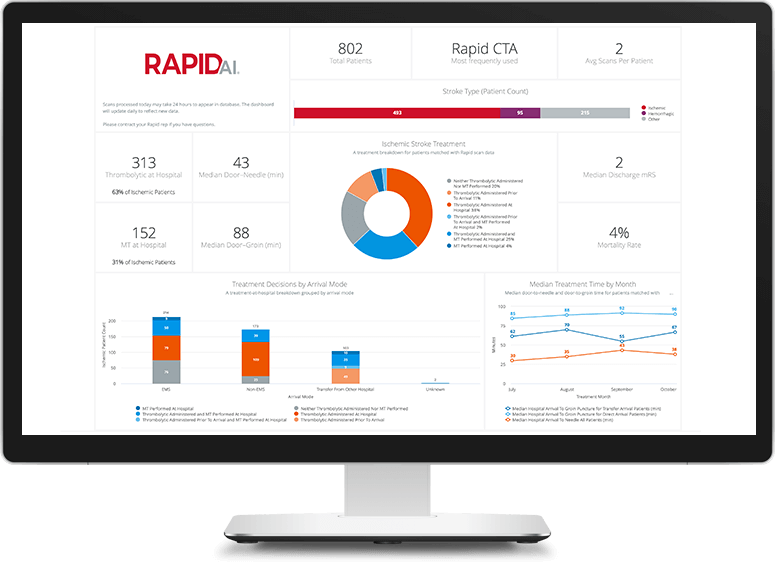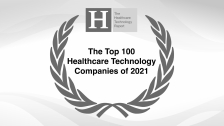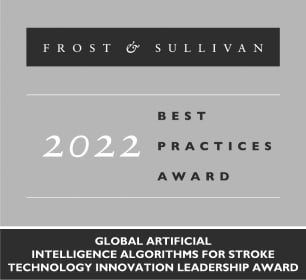RapidAI Insights is a valuable solution for multi-site systems and referral networks looking to standardize patient care processes and optimize operational efficiencies that help to reduce costs across sites, while simultaneously improving patient outcomes, and saving more lives.

RapidAI Insights enables hospitals to monitor the usage of the Rapid platform by site and proactively ensure proper and consistent use of Rapid products across sites.
RapidAI Insights gives hospital IT and security team members peace of mind on who has access to and is using Rapid products.
RapidAI Insights provides health systems with the intelligence to monitor the adoption of Rapid clinical and workflow products, and the impact these products have on care team coordination and time to treatment.
RapidAI Insights helps reduce time spent on manual data abstraction by automatically generating robust reporting that combines operational, clinical, and imaging data. These reports are designed to help optimize processes and reach clinical goals, including exceeding AHA guidelines and meeting other certification requirements.
Systemwide reporting is both time-consuming and resource-intensive. Without this level of information, however, detecting trends and identifying outliers is virtually impossible. RapidAI Insights can provide you with the systemwide information you need to make better operational and financial decisions for your hospitals.
The challenge to continuously improve patient care is ever increasing and the long list of metrics required to track and maintain compliance with protocol standards continues to grow. This makes the collection of the data you need increasingly complex and time consuming—reducing the amount of time you have to spend on patient care. By providing the information you need to identify outliers and trends, RapidAI Insights enables your hospital to improve protocols, monitor and review cases, and implement process improvements, and measure program effectiveness over time.
As your hospital system and referral network continues to expand, the oversight and security of application usage, along with ensuring mobile and web app users have access to only the case information from sites they’re associated with becomes increasingly complex. RapidAI Insights takes the complexity out of the reporting required to comply with security best practices by giving you the information you need to monitor and audit Rapid Mobile App and Rapid Web App access and usage.
This report offers data on Rapid utilization, scan details and demographics, and scan quality.
This report provides hospital sites and systems with reporting and analysis of Rapid workflow product usage to measure the impact on time to treatment, identify trends in workflow and optimize user engagement of Rapid Workflow for both Stroke and PE.
Designed to help hospitals support best practices in security, monitoring and compliance auditing, this report provides IT teams with information on Rapid Mobile App and Rapid Web App access and usage.
This report offers customers a detailed view into the patient journey and clinical outcomes to help them drive stroke protocol improvements.
This report offers an information-rich summary of site-specific information across systems for those looking to monitor the RapidAI system adoption, analyze stroke care, optimize operational efficiencies, improve consistency of care, reduce stroke-related costs, and drive better clinical outcomes.
In addition to the reports described above, our Professional Services team is capable of delivering customized reports to satisfy the variety of specific analytics needs your hospital or health system may have.
Learn more how RapidAI Custom Insights can work for you RapidAI Custom Insights.
"As an Interventional Neuroradiologist for a large system, I understand the tremendous value in seeing stroke imaging metrics across patients and our dozens of hospitals in multiple states. Analytics coming out of RapidAI Insights help us better understand the opportunities and challenges, which greatly benefit our patients, from the timeliness of care to informing how we handle transfer decisions. In parallel, it also helps our administrators better understand our work from a business perspective."


